Joining wood

Pieces of wood can be joined together in many different ways.
Nails, screws and glue are the most common ways to join wood together.
When making these joins, wood can be arranged and joined differently for increased strength and stability.
A butt joint and a lap joint are two simple joins you could use.

Video: Joining wood without screws
Join Fran in the workshop to find out about some ways to join pieces of wood together.
Fran: I'm Fran and I'm here in my workshop with Richard and Emma and we need to join these pieces of wood together to build our lantern.
Fran: Now, we could use screws but what else could we use?
Richard: Could we use glue?
Fran:That is a good point. Wood can be joined with glue, or it can be cut into different shapes that fit tightly together.
Emma: Like a jigsaw puzzle!
Fran: Exactly like a jigsaw! And there are lots of different types of joint, the simplest is called a butt joint.
Fran: And that is when you take two pieces of wood and you butt them against each other and then you hold them in place with glue and that's it! Why don't we start gluing our pieces of wood together to create the frame for our lantern. Now, we could use these pegs to hold the pieces together until the glue dries.
Richard: A butt joint is quick to make!
Fran: it is really quick to make, but if it's not reinforced in some way, then a butt joint isn't going to be very strong.
Emma: Is there a different type of joint that's stronger?
Fran: There is! It is called a lap joint. Have a look at these two pieces of wood. Is there anything that you notice?
Richard: That piece has a groove cut out.
Emma: I think the second piece might fit into the groove.
Fran: Do you want to give it a go?
Emma: Yes, they fit.
Fran: You see how the wood overlaps each other? That is why it's called a lap joint.
Richard: So the lap joint is stronger?
Fran: That's right, the groove in one piece of wood holds the other piece of wood nice and tight and so it adds strength to the joint.
Fran: Now when it comes to the butt joints in the frame for our lantern, there are other ways we could add strength. We could take these other bits of wood and then put it into the frame to give it more support. But, where do you think they should go?
Emma: I think here.
Fran: Shall we give it a go?
Emma: Yes.
Fran: Right, you get the glue!
Emma: That feels so much stronger!
Fran: It does, doesn't it? Now these are called trusses, so should we add them to the other sides of our frame?
Fran: Another way to reinforce the structure is to use these lollipop sticks and to stick them on the corners and that makes it stronger still. This is called triangulation.
Fran: So a butt joint and a lap joint are both useful ways to join pieces of wood without using screws.
Richard: A butt joint is quick to make but isn't very strong.
Emma: A lap joint takes careful cutting but it is a strong joint.
Fran:Brilliant work both of you! Now we have got to finish our lantern and to do this we've got to stick tracing paper around the outside, but we've got to keep one side uncovered for our light to go in. And what we're using is this. An LED solar powered tealight.
Emma: I love it!
Richard: It looks so good!
Joining wood with glue
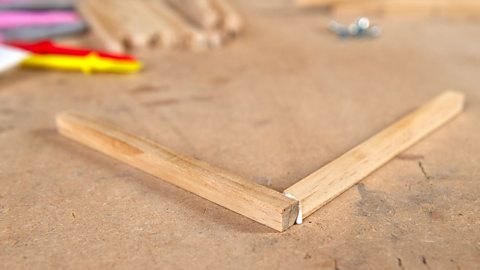
When joining wood using glue, the correct glue must be used. PVA glue forms a strong bond and dries clear.
It is fast drying and can bond materials together in less than an hour. Although, it is important to note that maximum bond strength can take up to 24 hours.
It can be useful to use clamps when gluing pieces of wood together.
Using a clamp will help hold the wood tightly in place and stop it from moving before the glue is fully dry.

Butt joint
A butt joint is a way to arrange and join two pieces of wood.
To create a butt joint, simply place the end of one piece of wood against another piece of wood.
Usually wood glue is then used to permanently join the pieces together.
A butt joint is the simplest way to join two pieces of wood. It only takes a short amount of time to make and no special tools or equipment are needed.
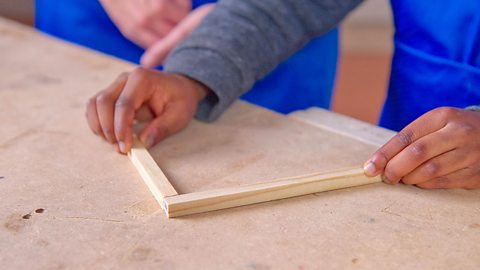
However, a butt joint is not a particularly strong way to join things.
You can add extra strength by adding more materials to reinforce the joint. This can be done by adding nails or screws.
Alternatively, you could add triangular supports to the outside of a butt joint.
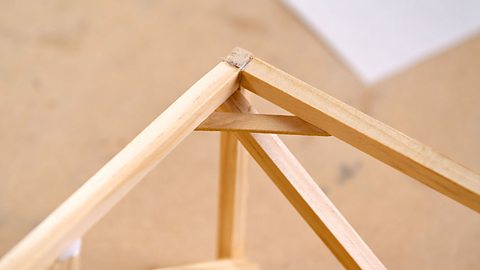
Butt joints are often used in wooden frames when building houses.
They are also used to make furniture frames and boxes, such as bookcases and shelves. They often need to be reinforced to be strong enough.
Lap joint
A lap joint is a way to arrange and join two pieces of wood by overlapping them. It is stronger than a butt joint.
To create a lap joint, a section of wood must be cut away from the end of one or both pieces of wood. This leaves what is called a 'shoulder'.
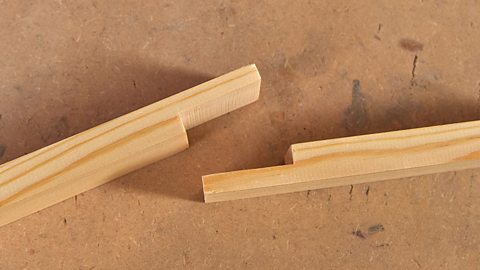
The shoulders are then joined together and wood glue can be used to permanently join them.
The lap joint is stronger than a butt joint because there is more wooden surface to put glue on.
A lap joint will take more time to complete and will need some specialist equipment and tools.
Tools such as chisels, mallets and saws can be used to create a lap joint.
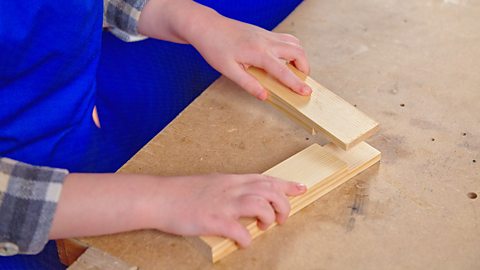
Lap joints are often used when extra strength is required in a specific part of a piece of furniture.
For example, lap joints are used for drawers. These need to be strong to hold the contents and durable so they can be opened and closed repeatedly.
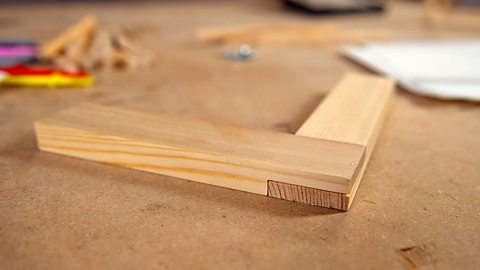
Key words
| Butt joint | A way to arrange and join two pieces of wood, by placing the end of one piece of wood against another. |
| Lap joint | A way to arrange and join two pieces of wood by overlapping them. |
| Reinforce | To strengthen and support an object, usually by adding more material. |
| Shoulder | Part of the wood has been removed or shaped to be similar to a shoulder in its shape or function. |
Quiz: Butt joint or lap joint?
See if you can spot the joints in this activity.
More on Structures
Find out more by working through a topic
- count4 of 5
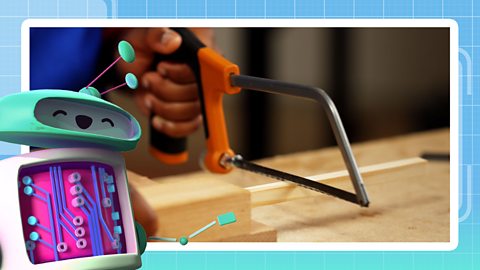
- count5 of 5
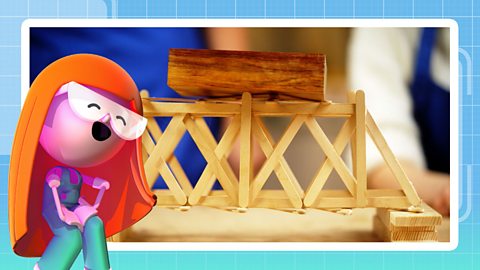
- count1 of 5

- count2 of 5
